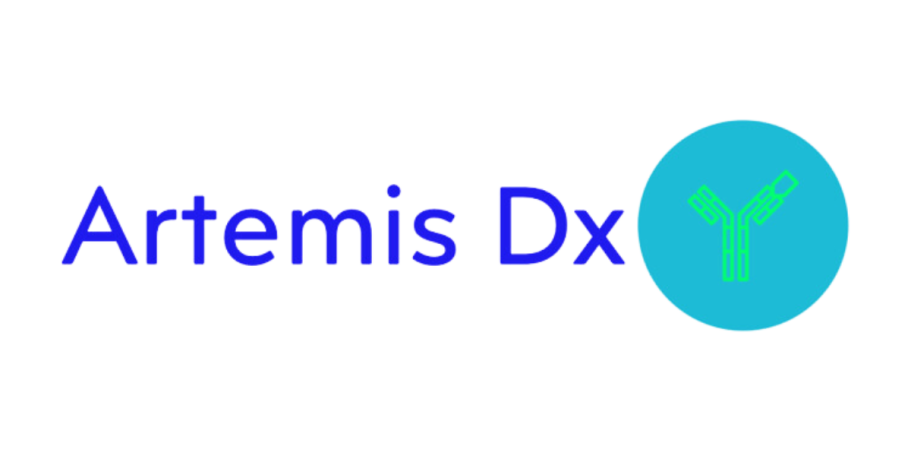Comparing Visual Particle Labels in Lateral Flow Assays
By Hans Boehringer and Robert Hudak, Artemis Dx
Lateral flow tests (LFTs) have long been a crucial diagnostic tool, especially in point-of-care (POC) testing, thanks to their simplicity, rapid results, and ease of use. These tests, originally associated with pregnancy tests, are currently used as rapid antigen/virus detection tests for respiratory infectious diseases such as COVID-19 and have become widely accepted since the start of the COVID-19 pandemic. At the heart of these tests are visually detectable particles that are conjugated with antibodies or other specific biomolecules to indicate the presence of a target analyte to the user. The three types of particles discussed in this article and commonly used in LFTs include colloidal gold nanoparticles, colored polystyrene microspheres (latex beads), and colored cellulose nanobeads. Each of these detection particles has unique properties and advantages, affecting the sensitivity, specificity, stability, and visual readability of the test.
This comparative analysis will discuss the chemistry, functionality, and performance of colloidal gold, colored microspheres, and cellulose nanobeads in lateral flow tests, with a focus on their use in point-of-care diagnostics while considering factors like ease of production, optical visibility, particle stability, and overall assay performance.
Colloidal Gold Nanoparticles
Overview
Colloidal gold nanoparticles (AuNPs) are the most widely used and historically significant detection particles in LFTs. Their popularity stems from their intense red color, chemical stability, and established production protocols. Typically, these gold nanoparticles are conjugated with antibodies or other biomolecules that enable selective binding to the target analyte. When the analyte is present, the gold nanoparticles accumulate at the test line, forming a visible red band.
Optical Properties
Colloidal gold particles owe their red color to localized surface plasmon resonance, where incident light causes electron oscillation within the nanoparticles, giving them a characteristic absorption peak in the visible spectrum. This property allows for an easy visual interpretation of test results without the need for specialized equipment.
Sensitivity
While colloidal gold LFTs have proven to be effective in detecting a wide range of analytes, they have limitations regarding sensitivity. The color intensity is directly proportional to the number of particles accumulating at the test line. Therefore, at low concentrations of the target analyte, the signal (i.e. the color intensity) may be too weak for visual detection, leading to false negatives or the need for more sensitive detection methods, such as optical readers, high sensitivity visual labels (e.g. cellulose nanobeads, gold nanoshells), or fluorescent particles (e.g. Europium microspheres).
Stability
Gold nanoparticles exhibit excellent chemical stability over a wide range of environmental conditions. The stability of AuNPs is one of their strongest advantages, as they can be stored for extended periods without significant degradation or aggregation. Moreover, they are resistant to photobleaching, unlike certain dyes and other detection particles.
Production and Cost
The production of colloidal gold nanoparticles is well-established and relatively straightforward, involving chemical reduction methods that result in a uniform particle size distribution. The most widely used particle size for colloidal gold is 40nm diameter while 20nm and 80nm particles are viable alternatives. The overall costs, driven by the raw materials and the need for careful particle size control during synthesis, are relatively low per test unit, and they are the most cost-effective particles that are used in LFTs.
Colored Microspheres
Overview
Colored microspheres (erroneously called latex beads), usually made of polystyrene or other synthetic polymers, offer an alternative to gold nanoparticles in lateral flow assays. These beads can be dyed with various pigments, enabling them to produce distinct colors such as blue, red, green, or black. The ability to generate various colors makes colored latex beads useful for multiplexed assays, where multiple targets are detected simultaneously.
Optical Properties
Microspheres are usually larger than colloidal gold nanoparticles, with sizes ranging from 200 nm to 400 nm typically used in LFT’s. Their larger size makes them more visually prominent, which can improve the visibility of the test line, especially when lower concentrations of the target analyte are present. The color of the microspheres is derived from the pigments embedded within the particles, so they do not rely on light scattering or plasmon resonance like gold nanoparticles. Consequently, they may offer more consistent color intensity under varying environmental conditions.
Sensitivity
The larger size of microspheres may enhance the sensitivity of LFTs by producing more vivid and easily distinguishable test lines, even at low analyte concentrations. This is particularly useful in tests requiring high contrast or in low-light environments. However, due to their size, microspheres may hinder the capillary flow of the assay, leading to slower test times compared to smaller detection particles like colloidal gold.
Stability
Microspheres/ are relatively stable but can be sensitive to environmental factors like extreme temperatures, pH changes, or prolonged storage. Additionally, the dyes used to color latex beads may be susceptible to photobleaching over time, which can reduce the intensity of the test line. Stabilizing agents and protective coatings are often used to mitigate these effects.
Production and Cost
The production of colored microspheres is more complex compared to gold nanoparticles. It involves polymerization processes to generate beads of the desired size and shape, followed by dye incorporation. While the raw materials (polymers and pigments) are less expensive than gold, the overall manufacturing process can be costlier due to the multiple steps involved. Moreover, ensuring uniform particle size and color distribution can present a challenge, adding to production costs. The costs of microspheres in LFT’s are about 1.5 times the costs of colloidal gold per test not including any of the reagents such as antibodies that are needed for functionality.
Colored Cellulose Nanobeads
Overview
Cellulose nanobeads, derived from renewable biomass, represent a more recent development in lateral flow assays. These particles are highly versatile and can be dyed to produce various colors, similar to microspheres/latex beads. Their primary advantage lies in their intense coloring, their long shelf life, their biocompatibility and biodegradability, making them an attractive option for environmentally friendly diagnostics.
Optical Properties
Like microspheres, cellulose nanobeads are often larger than gold nanoparticles with sizes are around 300-400 nm, leading to enhanced visual detection. They can be dyed with a wide range of pigments through covalent linkage, producing colors that are visually distinct. The porous structure of cellulose enhances the retention of dyes, leading to more intense color development. The optical brightness of cellulose nanobeads may vary depending on the type of dye used and the efficiency of the dye process.
Sensitivity
Due to their larger size and high surface area, cellulose nanobeads typically offer greater sensitivity in lateral flow tests and often result in 5-10 fold increases in analytical sensitivity over colloidal gold based LFT’s. While they can bind larger amounts of detection antibodies or other biomolecules due to their size, thus potentially improving the limit of detection (LOD) for certain analytes, the overall mass needed in LFT’s is significantly lower. This can result in significant savings in antibodies and cost per test. Similar to microspheres/latex beads, the larger size of cellulose nanobeads can slow the flow rate of the assay, slightly affecting the overall time-to-result.
Stability
Cellulose nanobeads are stable under a variety of conditions that are applicable in LFT’s. Their biodegradability is advantageous from an environmental perspective, but it may pose challenges for long-term storage if not properly stabilized. Photobleaching of the dyes used in cellulose nanobeads can also be an issue, as with microspheres, but has not been a problem for us.
Production and Cost
Cellulose nanobeads are derived from natural sources, making them a more sustainable option. Their production involves extracting cellulose from plants or bacteria, followed by a proprietary nanoparticle fabrication process and subsequent dye incorporation. While the raw materials are inexpensive, the manufacturing process is proprietary, relatively new and still evolving. The cost of production can vary based on the scale of production and the specific dyes used. In our experience, the materials costs of cellulose nanobeads are approximately 2 times higher than for colloidal gold per test, not including antibody costs. However, the potential for lower environmental impact and biodegradability could make cellulose nanobeads a cost-effective choice overall as technology matures.
Comparative Analysis
Sensitivity
In terms of sensitivity, colored microspheres/latex and cellulose nanobeads have an advantage over colloidal gold due to their larger size, leading to more intense and visible test lines. In our experience, we have observed increased sensitivities of 5-10 times in certain assays when using cellulose nanobeads instead of colloidal gold. This improvement is very much assay, antibody and sample matrix dependent and there are some instances where similar sensitivities are seen with all three particles discussed. The increased size comes at the cost of slower capillary flow, which can extend the time it takes for the test to complete. Colloidal gold, while at times less sensitive at lower analyte concentrations, still offers a good balance between speed and visibility, especially in simple, qualitative tests.
Stability
Gold nanoparticles are the most stable of the three types, with excellent resistance to photobleaching and environmental changes. Microspheres/latex beads offer good stability but can be susceptible to photobleaching, particularly over long storage times. Cellulose nanobeads are also very stable when used properly and they have a unique natural biodegradability, which can be seen as an advantage for sustainability.
Production and Cost
Colloidal gold nanoparticles are relatively simple and cheap to produce on a large scale. Latex beads require more complex production methods, making them slightly more expensive but more versatile in terms of color and visibility. Cellulose nanobeads offer a sustainable and environmentally friendly alternative, and their production processes are still in development and can be more costly than established technologies. Due to their low amounts needed per test, they can be more cost-effective per test than gold or microspheres, especially when expensive antibodies are required.
Environmental Considerations
Cellulose nanobeads have the clear advantage in terms of environmental impact due to their biodegradability and the renewable nature of cellulose. Microspheres/latex beads are synthetic and non-biodegradable, potentially contributing to plastic waste. Colloidal gold nanoparticles, while non-toxic in small amounts, are also non-biodegradable but do not pose the same environmental concerns as synthetic polymers.
Conclusion
Each type of particle—colloidal gold, colored microspheres/latex beads, and cellulose nanobeads—offers distinct advantages and drawbacks when used in lateral flow tests. Colloidal gold remains the most popular due to its low cost, balance between stability, sensitivity, and ease of production. Colored latex beads can provide enhanced sensitivity and color versatility, especially for multiplexed assays, but at the cost of slower flow rates and higher production complexity. Colored cellulose nanobeads, while still in the early stages of development, can provide improved analytical sensitivities, provide cost savings when expensive antibodies are used, and offer promise as a sustainable and environmentally friendly alternative.
One major difference between colored microspheres and colloidal gold or cellulose nanobeads is that in most applications with microspheres the particles are surface modified with -COOH, -NH2 or -SH groups that can be used for covalent attachment of antibodies or biomolecules to the particles.
The choice of particle for a lateral flow test will ultimately depend on the specific application, including factors such as the required sensitivity, conjugation chemistry, assay complexity, production costs, and environmental considerations. It is critical to explore all these factors when starting new LFT development program when choosing the best particle label.
Artemis Dx has experience developing LFT’s with all three types of colored particles and offers consulting and development services to support your efforts.
Contact Hans Boehringer, PhD, CSO (hans.boehringer@artemisdx.com) or Bob Hudak, COO (bhudak@artemisdx.com) for more information or to discuss development opportunities.
We need your consent to load the translations
We use a third-party service to translate the website content that may collect data about your activity. Please review the details in the privacy policy and accept the service to view the translations.

